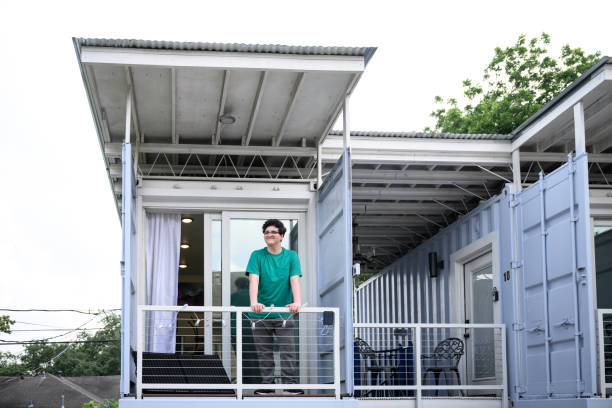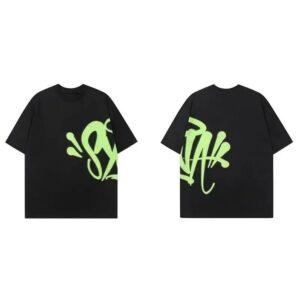
Young man puts solar powered string lights on balcony railing
The tiny house movement has taken the world by storm, offering a simpler, more sustainable way of living. But for those seeking true independence, an off-grid tiny house is the ultimate dream. These compact, self-sufficient homes allow you to live free from traditional utilities, relying instead on renewable energy, water catchment systems, and eco-friendly waste management. If you’ve ever fantasized about escaping the hustle and bustle, reducing your environmental footprint, or simply owning a home without the burden of a mortgage, an off-grid tiny house might be the perfect solution. In this guide, we’ll explore the benefits of off-grid living, how to find the right tiny home for sale, and what to consider before making the leap.
What Is an Off-Grid Tiny House?
An off-grid tiny house is a small, mobile or stationary dwelling designed to operate independently of public utilities. Unlike traditional homes, which rely on electricity grids, municipal water, and sewage systems, off-grid tiny homes generate their own power, collect and filter water, and manage waste sustainably. Typically built on wheels or a foundation, these homes are equipped with solar panels, composting toilets, rainwater harvesting systems, and energy-efficient appliances to minimize their environmental impact.
Off-grid tiny homes are gaining popularity for their affordability, mobility, and eco-friendliness. They offer a unique opportunity to live in remote or rural areas, far from the constraints of city life, while still enjoying modern comforts.
Benefits of Off-Grid Living in a Tiny House
Choosing an off-grid tiny house comes with a host of advantages that appeal to a wide range of people—from environmentalists to minimalists and adventurers. Here are some of the key benefits:
- Environmental Sustainability: By generating your own renewable energy and reducing water and waste consumption, you significantly lower your carbon footprint.
- Financial Freedom: Off-grid tiny homes are often more affordable than traditional houses, and living off the grid eliminates monthly utility bills, saving you money in the long run.
- Independence and Mobility: With no ties to utility companies, you can live in remote locations or move your home as needed (if it’s on wheels).
- Simplified Living: Tiny homes encourage a minimalist lifestyle, helping you declutter and focus on what truly matters.
These benefits make off-grid tiny homes an attractive option for those looking to live more consciously and independently.
How to Find Off-Grid Tiny Homes for Sale
If you’re ready to start your search for an off-grid tiny house, there are several ways to find one that suits your needs:
- Online Marketplaces: Websites like Tiny House Listings, Tiny Real Estate, and even general platforms like Gumtree or Facebook Marketplace often feature off-grid tiny homes for sale. Be sure to filter your search for “off-grid” or “self-sufficient” options.
- Tiny Home Builders: Many companies specialize in building custom off-grid tiny homes. In Australia, builders like Aussie Tiny Houses and Häuslein Tiny House Co. offer models designed for off-grid living. Contacting these builders directly can help you find or customize a home to your specifications.
- Tiny Home Festivals and Expos: Attending events like the Tiny House Festival Australia or local sustainability expos can connect you with builders, sellers, and even current owners looking to sell their homes.
By exploring these avenues, you’ll be well on your way to finding the perfect off-grid tiny house.
Key Features to Look for in an Off-Grid Tiny Home
Not all tiny homes are created equal, especially when it comes to off-grid capabilities. Here are some essential features to look for when shopping for an off-grid tiny house:
- Solar Power System: A robust solar panel setup with battery storage is crucial for generating and storing electricity.
- Water Catchment and Filtration: Look for homes with rainwater harvesting systems and filtration to ensure a clean, reliable water supply.
- Composting Toilet: A composting toilet is a must for managing waste sustainably without the need for a septic system.
- Energy-Efficient Appliances: Propane or solar-powered appliances, such as refrigerators and stoves, help minimize energy use.
- Insulation and Climate Control: Proper insulation and passive heating/cooling systems (like double-glazed windows) ensure comfort in various climates.
These features are vital for maintaining a comfortable and sustainable lifestyle off the grid.
Off-Grid Tiny Homes in Australia: A Growing Trend
The demand for off-grid living solutions is on the rise, particularly in countries like Australia, where vast landscapes and a culture of sustainability make it an ideal setting. Off-grid tiny homes Australia are becoming increasingly popular as more people seek to escape rising housing costs and embrace a more eco-conscious lifestyle. Builders across the country are responding to this demand by offering innovative designs that cater to the unique challenges of Australia’s climate, from the scorching outback to the temperate coastal regions. Whether you’re looking to park your tiny home on a rural property or explore the country’s diverse terrain, Australia’s tiny home market has something for everyone.
Legal Considerations for Off-Grid Tiny Homes
Before purchasing an off-grid tiny house, it’s essential to understand the legal landscape. Regulations vary by location, and living off-grid in a tiny home can sometimes fall into a gray area. Here are a few things to consider:
- Zoning Laws: Some areas have strict zoning regulations that dictate where tiny homes can be parked or built. Research local laws to ensure your tiny home complies.
- Building Codes: If your tiny home is on a foundation, it may need to meet specific building codes. Homes on wheels are often classified as caravans, which can bypass some regulations.
- Water and Waste Management: Ensure your off-grid systems, like composting toilets and greywater recycling, meet local health and environmental standards.
Consulting with local authorities or a tiny home expert can help you navigate these legal considerations.
Real Stories: Living Off-Grid in a Tiny House
For many, the idea of living off-grid in a tiny house is more than just a dream—it’s a reality. Take, for example, Sarah and Tom, a couple from Queensland who purchased an off-grid tiny home to live sustainably on their rural property. “We wanted to reduce our environmental impact and live more simply,” Sarah says. “Our tiny home allows us to do that while still enjoying modern comforts like hot showers and a fully equipped kitchen.”
Similarly, Mark, a retiree from Victoria, chose an off-grid tiny house to travel Australia’s vast landscapes. “I’ve always loved the idea of being self-sufficient,” he shares. “Now, I can park my home in the most beautiful, remote spots and live comfortably without relying on anyone.”
These stories highlight the freedom and fulfillment that come with off-grid tiny home living.
Conclusion
An off-grid tiny house offers a unique blend of sustainability, affordability, and independence. Whether you’re drawn to the environmental benefits, the financial freedom, or the chance to live in remote locations, these homes provide a pathway to a simpler, more intentional life. By understanding what to look for, where to find them, and how to navigate the legal landscape, you can confidently take the next step toward owning your own off-grid tiny home. The adventure awaits—start exploring today!
FAQs
- How much does an off-grid tiny house cost?
Prices vary depending on size, features, and customization. In Australia, off-grid tiny homes typically range from AUD 50,000 to AUD 150,000.
- Can I live off-grid legally in Australia?
Yes, but it depends on local zoning laws and building regulations. Tiny homes on wheels are often classified as caravans, making them easier to place on private land.
- What kind of maintenance do off-grid systems require?
Solar panels need occasional cleaning, batteries may need replacement every few years, and composting toilets require regular emptying. Overall, maintenance is manageable with proper care.
- How do I get water in an off-grid tiny house?
Most off-grid tiny homes use rainwater catchment systems or have water tanks that can be refilled from external sources. Filtration systems ensure the water is safe for use.
5. Is financing available for off-grid tiny homes?
Some builders offer financing options, and personal loans or RV loans may also be used. However, traditional mortgages are typically not available for tiny homes.







